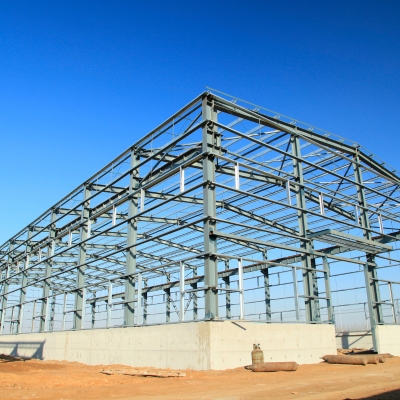
In today’s construction landscape, pre-engineered building structures have arisen as a groundbreaking solution, providing unmatched benefits in terms of efficiency, affordability, and environmental friendliness. With the advent of pre-engineering building technology, traditional construction methods are being redefined, paving the way for faster project completion times and enhanced structural integrity. Here, we’ll delve into the numerous advantages of pre engineering building structures and explore why they have become the preferred choice for a wide range of construction projects.
Streamlined Construction Process:
Pre engineered building structures, often referred to as PEBs, streamline the construction process from start to finish. Through meticulous engineering and advanced fabrication techniques, PEB components are manufactured off-site in controlled environments. This allows for precise customization and rapid assembly on-site, significantly reducing construction timelines.
Cost-Effectiveness:
One of the most notable advantages of pre engineering building structures is their cost-effectiveness. By eliminating the need for extensive on-site labor and reducing material waste, PEB construction offers substantial cost savings compared to traditional building methods. Additionally, the efficient use of resources and the ability to optimize designs further contribute to overall cost reduction.

Versatility and Flexibility:
Pre engineering building structures are highly versatile and adaptable to a variety of applications and architectural designs. Whether it’s a warehouse, factory, commercial complex, or even a residential building, PEBs can be tailored to meet specific project requirements. The flexibility of PEB construction allows for future expansions or modifications with minimal disruption, offering long-term value and investment protection.
Structural Integrity:
Despite their lightweight nature, pre engineering building structures exhibit exceptional strength and durability. Engineered to withstand diverse environmental conditions, including seismic activity and extreme weather events, PEBs provide robust structural integrity and enhanced safety for occupants. Rigorous quality control measures ensure that every component meets stringent industry standards, guaranteeing long-term performance and reliability.
Energy Efficiency:
With a growing emphasis on sustainability and energy conservation, pre-engineering building structures offer inherent advantages in terms of energy efficiency. By incorporating features such as insulated panels, cool roofing systems, and natural ventilation strategies, PEBs minimize heat gain, reduce energy consumption, and lower operational costs over the building’s lifecycle. Additionally, the modular design of PEBs allows for easy integration of renewable energy systems, further enhancing their environmental credentials.
Rapid Construction:
The prefabricated nature of pre engineering building structures enables rapid construction, allowing projects to be completed in a fraction of the time required for traditional building methods. This accelerated construction timeline not only reduces overall project duration but also enables faster occupancy and revenue generation for businesses. From concept to completion, pre-engineering building structures offer unparalleled speed and efficiency.
Customization Options:
Pre engineering building structures offer a wide range of customization options to suit specific project requirements and aesthetic preferences. From architectural finishes and color choices to interior layouts and façade treatments, PEBs can be customized to reflect the unique identity and branding of each project. Advanced computer-aided design (CAD) software allows for precise detailing and visualization, ensuring that the final product meets the client’s vision and expectations.
Sustainability:
In an era of increasing environmental awareness, pre engineering building structures stand out as sustainable construction solutions. By optimizing material usage, minimizing construction waste, and promoting recyclability, PEBs reduce the overall carbon footprint associated with building projects. Additionally, the energy-efficient features of PEBs contribute to lower greenhouse gas emissions and promote eco-friendly building practices.
Conclusion:
Pre engineering building structures offer a multitude of advantages that make them the preferred choice for modern construction projects. From streamlined construction processes and cost-effectiveness to structural integrity and sustainability, PEBs embody the future of building technology. With their versatility, flexibility, and inherent benefits, pre engineering building structures continue to redefine the way we build, setting new standards for efficiency, durability, and innovation in the construction industry.
Frequently Asked Questions (FAQs)
Q. What are pre-engineered building structures?
Pre-engineered building structures, also known as PEBs, are prefabricated steel structures that are designed and manufactured off-site before being assembled at the construction site. These structures are engineered to meet specific project requirements and are characterized by their efficiency, cost-effectiveness, and sustainability.
Q. How are pre-engineered building structures different from traditional construction methods?
Unlike traditional construction methods, which involve on-site fabrication and assembly of building components, pre-engineered building structures are manufactured in controlled environments using advanced technology and machinery. This off-site fabrication allows for precise customization and rapid assembly on-site, resulting in faster construction timelines and cost savings.
Q. What are the advantages of pre-engineered building structures?
Pre-engineered building structures offer numerous advantages, including streamlined construction processes, cost-effectiveness, versatility, structural integrity, energy efficiency, and sustainability. These benefits make PEBs an attractive choice for a wide range of construction projects, from industrial facilities and warehouses to commercial complexes and residential buildings.



